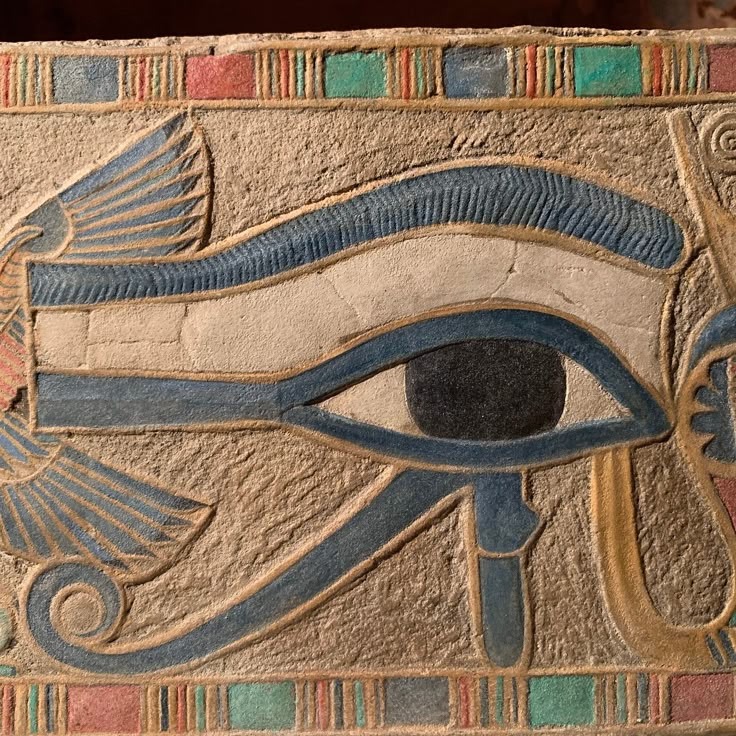The Tale of Horus: Wings of Destiny and the Eye of VengeanceI

Imagine a land where the sun illuminates the banks of the Nile, a realm teeming with gods and myth that shape the very essence of existence. In this vibrant world, a powerful tale unfolds—a saga of love, loss, and the indomitable spirit of a falcon-headed hero. This is the story of Horus, born from tragedy and destined to reclaim a throne shrouded in darkness.
As the winds whisper secrets and the sands shift with the passage of time, journey with me into the heart of ancient Egypt, where a fierce battle between light and darkness rages, and where the Eye of Horus emerges as a symbol of hope and resilience. What can we learn from this epic struggle, and how does the legacy of Horus continue to inspire us today?
“The Eye of Horus is a symbol of protection, royal power, and good health.” Have you ever gazed into someone’s eyes and felt a connection that transcends words? In ancient Egypt, the eyes of the falcon-headed god Horus represented not just sight but a powerful force of protection and healing. But what lies behind this captivating symbol, and how did it shape the beliefs of an entire civilization?
The Myth of Horus: A Tale of Loss, Vengeance, and Triumph
In the heart of ancient Egypt, where the sun kissed the horizon and the Nile whispered secrets, a powerful tale unfolded—a story of gods, love, and the eternal struggle between order and chaos. This is the myth of Horus, the falcon-headed god, destined to reclaim a throne shrouded in darkness.
The Tragedy of Osiris
Once, the land thrived under the benevolent rule of Osiris, the god of the afterlife and resurrection. Loved by the people and admired by the gods, Osiris brought fertility to the earth. But envy lurked in the shadows, embodied by his treacherous brother, Set, the god of chaos and storms. Consumed by jealousy, Set plotted a cruel fate for Osiris.
Under the guise of friendship, Set invited Osiris to a grand feast. There, he unveiled a magnificent coffin, claiming it as a gift. As Osiris climbed inside, Set sealed the lid and cast it into the Nile, drowning his brother in a cruel twist of fate. The world plunged into despair, and chaos reigned as Set seized the throne.
The Birth of a Hero
But hope was not lost. Osiris’s devoted wife, Isis, driven by love and determination, searched tirelessly for her husband. Through perilous trials, she located Osiris’s body and, using her magic, conceived their son, Horus. As she protected her child from Set’s wrath, she whispered tales of strength and justice, instilling in him the spirit of a true ruler.
When Horus came of age, he was ready to reclaim his father’s throne. The fierce determination of a falcon ignited within him, and he donned the mantle of vengeance. The time had come to confront Set and restore order to the land.
The Epic Battles
What followed was a series of epic battles between Horus and Set, filled with turmoil and intense confrontations. Each clash echoed the eternal struggle of light against darkness, harmony against chaos. In one pivotal battle, Horus fought valiantly but suffered a devastating blow—he lost his left eye. This eye, however, was not merely a symbol of loss; it became a powerful emblem of sacrifice and resilience.
In the aftermath, Thoth, the god of wisdom, stepped in to restore Horus’s eye, transforming it into the legendary Eye of Horus—a symbol of protection and healing. With renewed strength, Horus rallied the gods and fought fiercely to reclaim his rightful place.
The Triumph of Horus
Finally, after a fierce struggle, Horus emerged victorious, banishing Set and restoring balance to the universe. He ascended to the throne, not just as a ruler, but as a protector of the people. The Eye of Horus, a reminder of his sacrifice, became a powerful talisman, believed to guard against evil and ensure health and prosperity.
As the sun rose each day, Horus was revered not just as a god of the sky but as a beacon of hope—a reminder that even in the face of unimaginable loss, strength, courage, and the will to fight for what is right can lead to triumph.
The Legacy of Horus
The myth of Horus resonates through time, illustrating the themes of love, loss, and the eternal battle between chaos and order. It reminds us that heroes can emerge from tragedy, and through resilience, we can reclaim our destinies.
In reflecting on this timeless story, consider this: What battles do you face in your own life, and how can you draw inspiration from Horus’s journey to find your strength and reclaim your path?
The Role of Ra, Horus, and Isis
Horus’s connection to Ra, the sun god, further intertwined their stories. Ra, who represented the life-giving sun, was seen as the source of Horus’s power. Together, they embodied the balance between light and dark, good and evil. Isis, Horus’s mother, played a crucial role as the protector and nurturer, ensuring Horus’s safe journey to adulthood and his eventual triumph over Set.
The dynamics among these deities shaped the spiritual landscape of ancient Egypt, reflecting themes of resurrection, protection, and the eternal struggle between order and chaos. The Eye of Horus became a powerful talisman, believed to ward off evil and provide guidance, ensuring the well-being of both the living and the deceased.
Impact on Egyptian Religion
The Eye of Horus transcended mere mythology; it became a cornerstone of Egyptian religion and culture. Often used in funerary practices, it was believed to grant the deceased protection in the afterlife, guiding them through the challenges they would face. Amulets featuring the Eye were commonly worn for protection against illness and misfortune, becoming synonymous with health and safety.
The Eye of Horus Decoded: A Symbol of Protection and Power
The Eye of Horus, known as “Wedjat,” is one of the most iconic symbols of ancient Egypt, rich in meaning and steeped in mythology. But what does it really represent? Let’s decode this powerful emblem and explore its significance

Structure and Meaning
The Eye of Horus is often depicted as a stylized eye with distinctive markings. Each component holds meaning:
The Eye: Represents perception and insight, symbolizing awareness and clarity.
The Eyebrow: Associated with the falcon’s brow, signifies protection and the watchful gaze of the god.
The Pupil: Often seen as the source of power, it embodies focus and the ability to see both physical and spiritual realms.
The Teardrop: This element symbolizes sacrifice, reflecting Horus’s loss during his battle with Set. It can also represent healing and renewal.
Symbolic Functions
Protection: The Eye of Horus was believed to ward off evil spirits and misfortune. Amulets bearing its image were commonly worn by the living and placed in tombs to ensure safety in the afterlife.
Healing: In addition to protection, the Eye symbolized health and restoration. It was associated with the process of healing, particularly because of the myth of Horus’s eye being restored by Thoth.
Royal Power: The Eye became a symbol of kingship and authority, representing the divine right to rule. Pharaohs wore it as a mark of their connection to Horus, reinforcing their status as protectors of the land.
Balance and Harmony: The Eye of Horus also embodies the duality of existence—the balance between chaos and order, life and death. It reflects the cyclical nature of life, as represented in the eternal struggles of Horus against Set.
Cultural Impact
The Eye of Horus permeated various aspects of Egyptian culture, from art to architecture. It appeared in jewelry, pottery, and even hieroglyphs, showcasing its significance in daily life. Beyond ancient Egypt, the symbol has transcended time, influencing modern art, design, and spiritual practices.
Reflection
As we decode the Eye of Horus, we uncover a rich tapestry of meanings that resonate even today. It invites us to consider our own perspectives—how we see the world, protect what we cherish, and seek balance amid chaos.
In a world filled with uncertainty, how can we draw strength from symbols like the Eye of Horus to find clarity, protection, and healing in our own lives?
The stories of Horus, Ra, and Isis shaped the way ancient Egyptians viewed the world around them, instilling a sense of hope and resilience in the face of adversity. Their mythos illustrated the cyclical nature of life and death, reinforcing the belief in an afterlife where one could achieve eternal peace.
As you reflect on the significance of the Eye of Horus, consider this: How do the symbols and stories of the past continue to influence our understanding of protection, identity, and resilience today?








